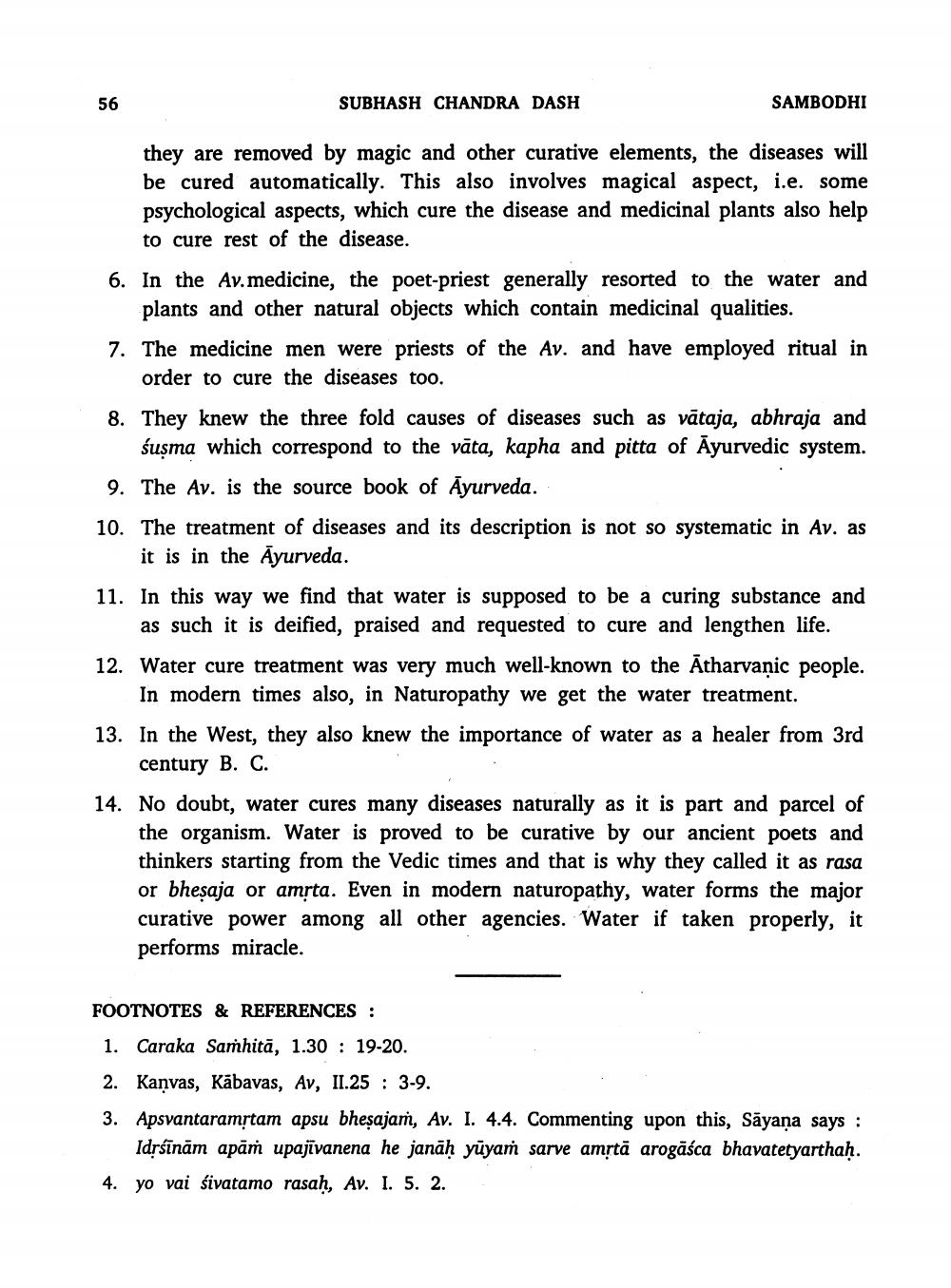________________
56
SUBHASH CHANDRA DASH
SAMBODHI
they are removed by magic and other curative elements, the diseases will be cured automatically. This also involves magical aspect, i.e. some psychological aspects, which cure the disease and medicinal plants also help
to cure rest of the disease. 6. In the Av.medicine, the poet-priest generally resorted to the water and
plants and other natural objects which contain medicinal qualities. 7. The medicine men were priests of the Av. and have employed ritual in
order to cure the diseases too. 8. They knew the three fold causes of diseases such as vātaja, abhraja and
śuşma which correspond to the vāta, kapha and pitta of Ayurvedic system. 9. The Av. is the source book of Ayurveda. 10. The treatment of diseases and its description is not so systematic in Av. as
it is in the Ayurveda. 11. In this way we find that water is supposed to be a curing substance and
as such it is deified, praised and requested to cure and lengthen life.
Water cure treatment was very much well-known to the Atharvanic people.
In modern times also, in Naturopathy we get the water treatment. 13. In the West, they also knew the importance of water as a healer from 3rd
century B. C.
14. No doubt, water cures many diseases naturally as it is part and parcel of
the organism. Water is proved to be curative by our ancient poets and thinkers starting from the Vedic times and that is why they called it as rasa or bhesaja or amsta. Even in modern naturopathy, water forms the major curative power among all other agencies. Water if taken properly, it performs miracle.
FOOTNOTES & REFERENCES :
1. Caraka Samhitā, 1.30 : 19-20. 2. Kanvas, Kābavas, Av, II.25 : 3-9. 3. Apsvantaramstam apsu bhesajaṁ, Av. I. 4.4. Commenting upon this, Sāyana says:
Idršīnām apāṁ upajīvanena he janāh yūyam sarve amrtā arogāśca bhavatetyarthah. 4. yo vai sivatamo rasah, Av. I. 5. 2.
urmenampå arogasca bravaceyarihan.




